Key takeaways:
- Inclusive education is about creating a supportive environment for all learners, fostering empathy and community.
- Gender equality is crucial for societal progress, advocating for equal opportunities leads to a more innovative future.
- Key principles of inclusive education include recognizing diverse learning needs and creating welcoming environments through collaboration.
- Challenges include inadequate training for educators and resource allocation, which hinder the implementation of inclusivity.
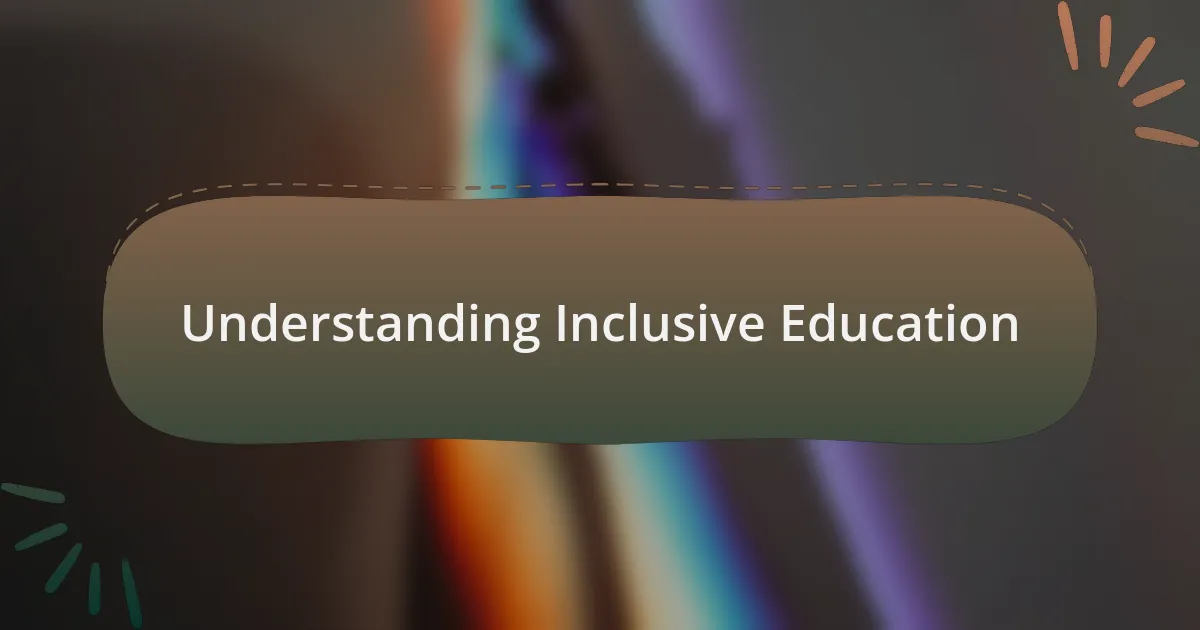
Understanding Inclusive Education
Inclusive education is more than just placing students with disabilities in regular classrooms; it’s about creating an environment where all learners feel valued and supported. Reflecting on my own experiences, I remember a time in a class where a student with a hearing impairment challenged us all to communicate differently. That moment taught me the importance of adapting teaching methods rather than expecting everyone to fit into the same mold.
When we discuss inclusive education, it’s crucial to recognize that it serves as a bridge to gender equality as well. I often wonder, how can we advocate for gender equality if certain voices in our classrooms are silenced or overlooked? The effort must be made to ensure that everyone, regardless of gender or ability, has an equal opportunity to participate and thrive.
One powerful aspect of inclusive education is its potential to foster empathy among students. I’ve seen peers bond over collaborative projects that required them to rely on each other’s strengths, regardless of their diverse backgrounds. This journey isn’t just about academic learning; it’s also about cultivating a community that embraces differences, making every individual’s experience richer and more complete.

Importance of Gender Equality
Gender equality is essential because it fosters a fair and just society, where everyone has the opportunity to reach their full potential. I’ve often noticed how powerful discussions can become when people from diverse gender identities share their perspectives. Have you ever experienced a conversation that shifted your viewpoint entirely? It’s in these moments that I truly see the value of equality—not just for individuals, but for the strength of our communities.
When we advocate for gender equality, we’re also challenging traditional norms that have often sidelined voices, particularly in education. I recall attending a workshop where women leaders shared their journeys, illuminating the stark contrast between their experiences and those of their male counterparts. Their stories resonated with me and emphasized how critical it is for all genders to have equal access to opportunities. This is not just a moral imperative; it’s vital for holistic societal progress.
One striking outcome of promoting gender equality is its ripple effect on future generations. As a mentor, I’ve witnessed young people flourish when they see both men and women succeeding in various fields. This inclusive environment motivates them to break barriers and push for their own dreams. It begs the question: What kind of future do we want to build? I believe that by prioritizing gender equality, we’re actively shaping a more innovative and compassionate world.
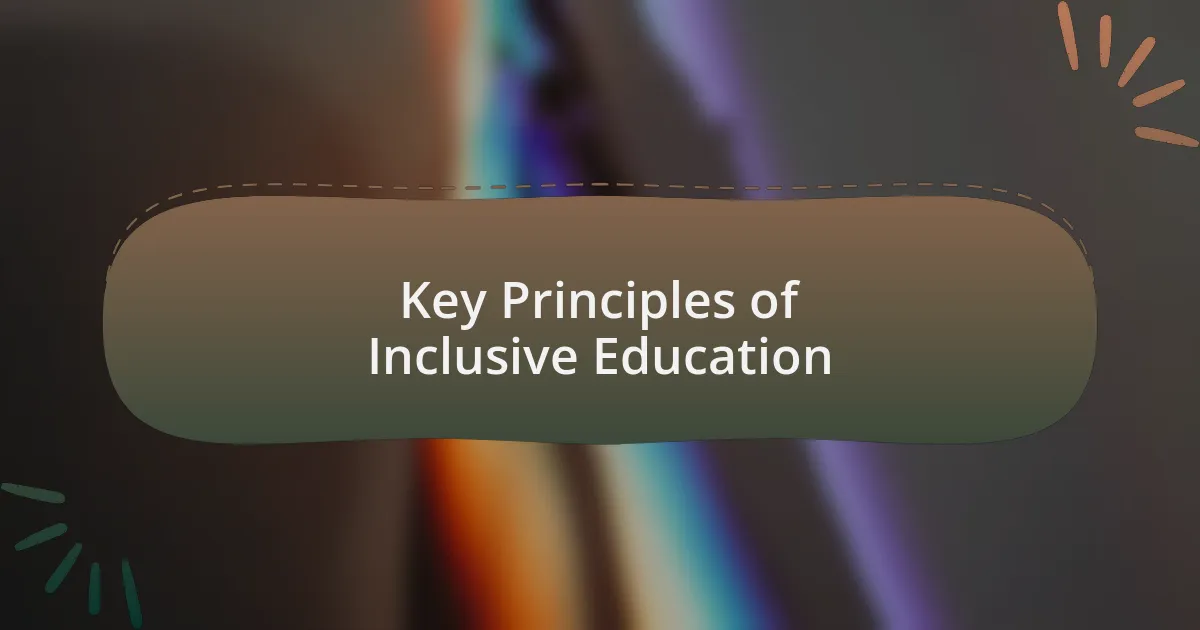
Key Principles of Inclusive Education
One key principle of inclusive education is recognizing the diverse learning needs of all students. I remember working with a young girl who faced challenges due to her hearing impairment. With the right support and resources, she thrived, showing me how tailored approaches can unlock potential. Have you ever seen someone overcome obstacles with just a little extra help?
Another fundamental aspect is creating a welcoming environment where every student feels valued and respected. I once volunteered at a school where inclusive practices transformed the atmosphere. It was inspiring to see students of all backgrounds coming together, celebrating their differences. When students feel safe to express themselves, isn’t it incredible how their confidence grows?
Lastly, collaboration among educators, families, and communities plays a crucial role in inclusive education. I vividly recall a project where teachers and parents worked hand-in-hand to support a child with autism. Their teamwork not only improved the child’s learning experience but also brought everyone closer together. Doesn’t it highlight the importance of partnership in nurturing all learners?
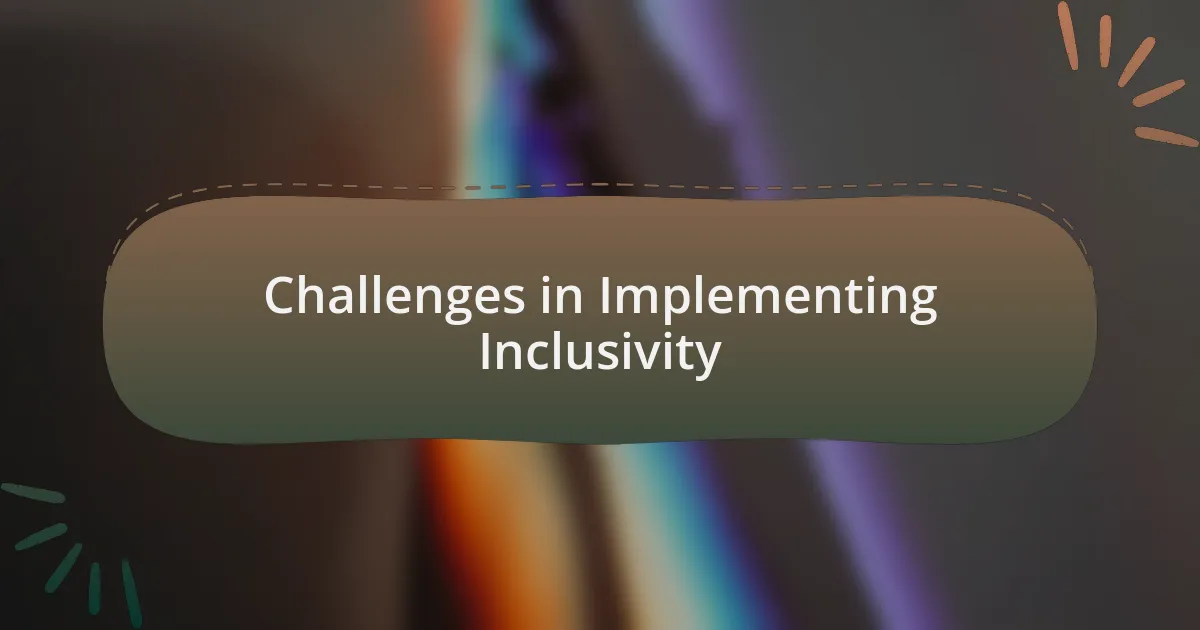
Challenges in Implementing Inclusivity
One of the significant challenges in implementing inclusivity in education is the lack of proper training for educators. I remember a workshop I attended where teachers expressed their frustrations about not knowing how to adapt their teaching for students with diverse needs. It made me realize that without the right tools and understanding, even the most well-intentioned educators can struggle to create an inclusive environment. How can we expect inclusivity to flourish if those at the forefront are not equipped to handle its complexities?
Resource allocation is another pressing issue. In a school I visited, they faced a budget crunch, which directly affected their ability to provide necessary support services. This situation left many students without access to vital tools like speech therapy or specialized teaching aids. Isn’t it disheartening to think that financial barriers can hold back the potential of countless eager learners?
Furthermore, societal attitudes towards disability and difference play a formidable role in hindering inclusivity. I’ve seen firsthand how negative perceptions can affect not only the students who need support but their peers as well. At one community event, I noticed how a lack of awareness led to uncomfortable interactions, fostering exclusion rather than understanding. Isn’t it crucial for us to address these deep-rooted beliefs if we hope to cultivate a genuinely inclusive culture?
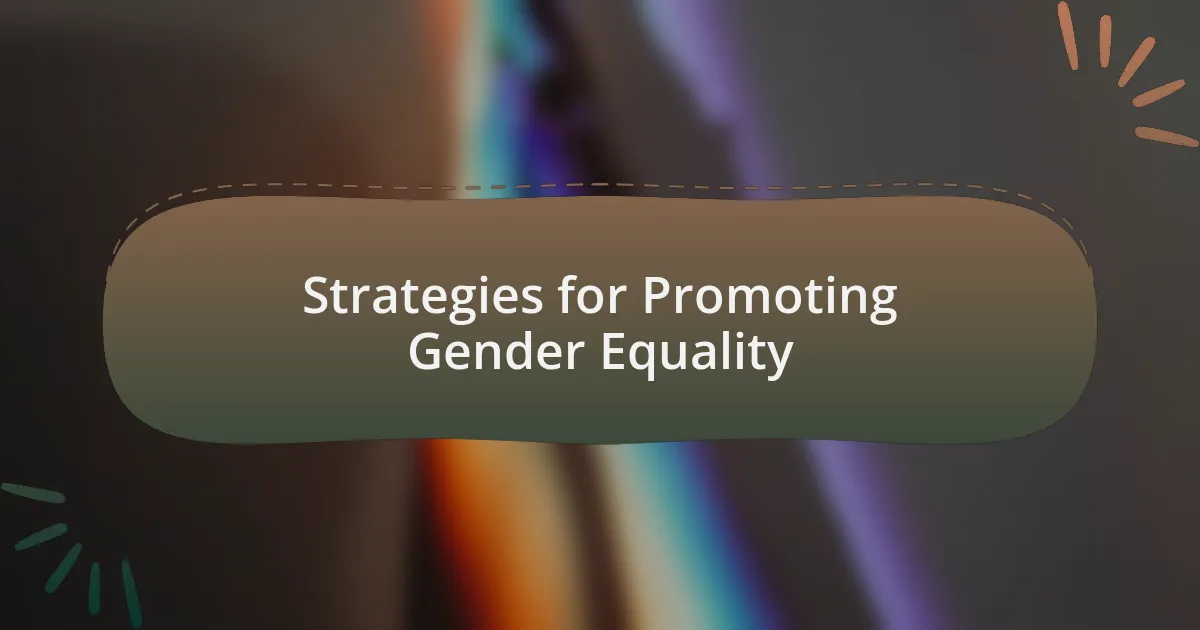
Strategies for Promoting Gender Equality
One effective strategy for promoting gender equality in education is implementing comprehensive training programs for educators focused on gender inclusivity. I recall a training session where participants engaged in role-playing scenarios to better understand the challenges faced by students of different gender identities. This experiential learning not only shifted their perspectives but also equipped them with practical skills to foster a more inclusive classroom. How can we expect discussions about gender equality to be meaningful if educators aren’t prepared to facilitate them?
Additionally, integrating gender-sensitive curricula is crucial for teaching students about equity from a young age. I’ve always been moved by how stories and examples that highlight diverse role models can inspire both boys and girls. For instance, when my niece read a book featuring a female scientist, she was thrilled to see someone relatable breaking stereotypes. Providing materials that reflect various gender identities and achievements helps to normalize diversity and encourage respect. Isn’t it remarkable how simple changes in what we teach can have a lasting impact on the thoughts and beliefs of future generations?
Engaging the community plays a vital role in fostering gender equality as well. I’ve witnessed how local workshops and discussions can break down barriers, allowing parents and advocacy groups to collaborate effectively. During one event, a panel of diverse voices sparked meaningful conversations about gender norms, which resonated widely and led to actionable initiatives. When communities come together to support gender equality, it generates a ripple effect that benefits everyone involved, doesn’t it?
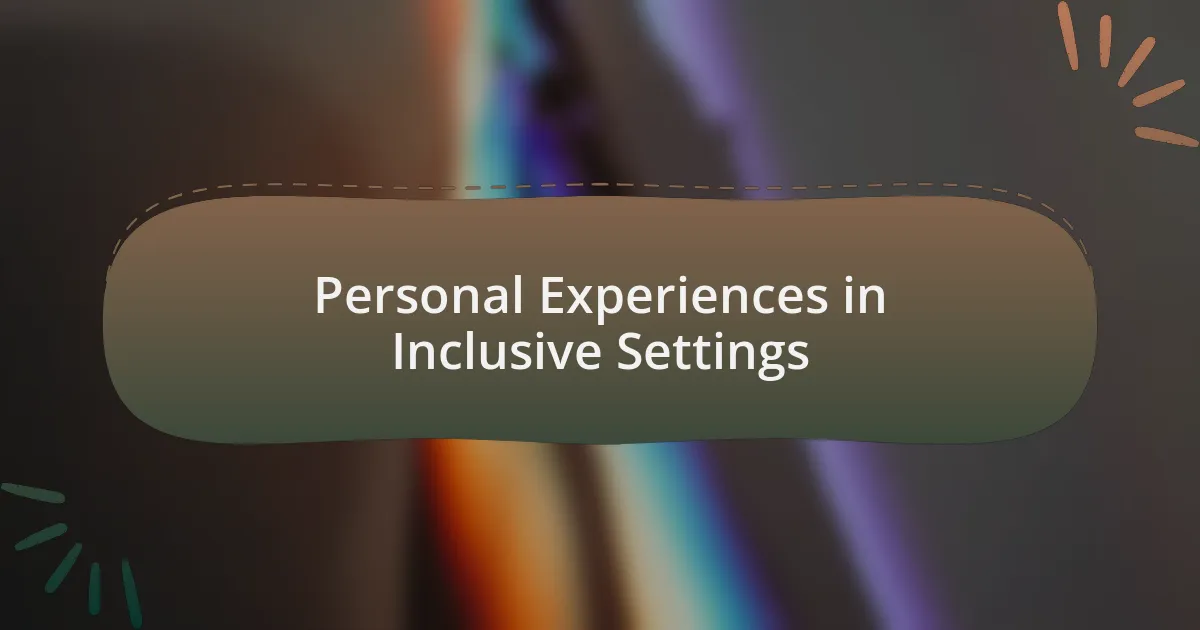
Personal Experiences in Inclusive Settings
In my experience, being part of an inclusive classroom setting was eye-opening. I remember a particular instance where students from various backgrounds shared their stories during a class project. The raw honesty and vulnerability on display were powerful; it was a reminder of how much we can learn from one another when given the chance. How often do we truly listen to each other’s experiences?
Working alongside students with different learning needs opened my eyes to the importance of adaptability. In group activities, I saw firsthand how flexibility can create a supportive environment for everyone. I recall one student who used assistive technology to participate fully in a science experiment; his enthusiasm for learning was contagious. Isn’t it amazing how a little accommodation can unlock potential and foster a sense of belonging?
I also found that inclusive settings often foster unique friendships that might not have occurred otherwise. Through shared experiences on collaborative projects, students transcended labels and stereotypes, building connections based on understanding and respect. I vividly remember watching two kids, initially complete opposites, realize they both loved the same video game— their friendship blossomed from that moment. Can we underestimate the power of shared interests in bridging gaps?
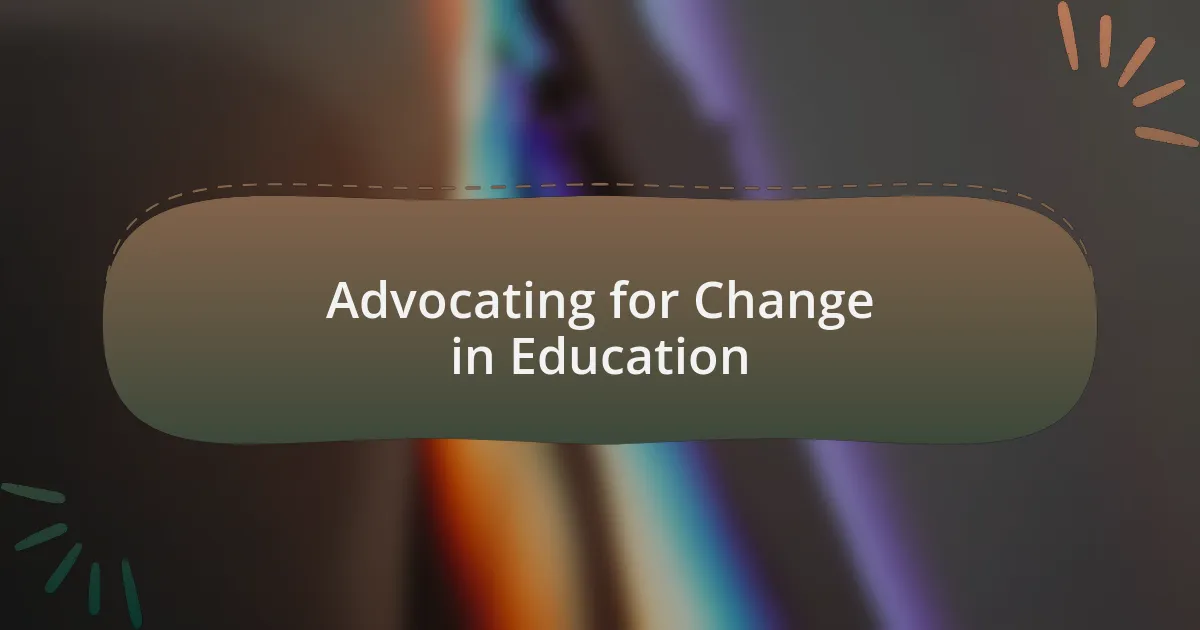
Advocating for Change in Education
Advocating for change in education requires more than simply discussing ideas; it demands action and persistence. I recall a community meeting where passionate parents shared their concerns regarding traditional teaching methods that failed to accommodate their children’s unique needs. The emotion in their voices sparked a collective determination among us to seek reforms that prioritize inclusion. Isn’t it inspiring how personal stories can ignite a movement?
One powerful moment I experienced was when I volunteered at a local school striving to implement inclusive practices. I witnessed teachers embracing new, creative strategies to engage all students, such as using diverse materials and teaching styles. It was clear that the willingness to adapt not only benefited the students but also transformed the entire classroom dynamic. How can such a shift not encourage one to take up the mantle of advocacy?
Reflecting on changes in education, I often think about the role of policy in shaping inclusive environments. Participating in discussions with educators and administrators revealed a common thread: systemic barriers often hinder progress. I remember speaking with a teacher who expressed frustration about limited funding for special resources. This made me realize that advocacy isn’t just about raising awareness; it’s equally about pressing for policy changes that ensure every student has the tools they need to succeed. Isn’t it time we recognize the urgency of these conversations?